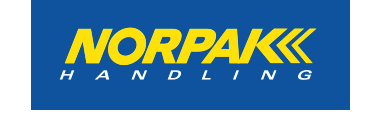 Norpak Handling on four very common types of conveyor belts
Norpak Handling on four very common types of conveyor belts
February 25, 2022 REDWIRE is news you can use from leading suppliers. Powered by FRASERS.
Posted by Norpak Handling Limited
Norpak Handling provides conveying products and complete turn-key systems to suit your requirements and solve your probl... Read more
Subscribe
Free REDWIRE e-newsletter

A typical belt conveyor
Material-handling solutions are the specialty of Norpak Handling Ltd., including not just conveyors, but conveyor belts too. These products come in a broad range of designs to accommodate different niches in various sectors, but the two main categories are general-purpose belts and specialty belts. Customers should select conveyor belts carefully and make sure the belts are optimized for their specific applications, to get fully effective conveyor systems in their plants or warehouses.
PVC, polyurethane, plastic, metal
Using the correct conveyor belt can be crucial for a business, since conveyor performance should be optimized to suit manufacturing goals and requirements. Four common types of belts are PVC, polyurethane, plastic, and metal belts.
Lightweight yet durable, PVC belts are highly versatile and easy to use, with material that makes them resistant to wear. PVC is also one of the most sanitary belt materials because it is non-absorbant and fluid-resistant. This is why businesses often use these belts to move food, as well as pharmaceuticals, beauty products, and other sensitive items vulnerable to spillage. Meanwhile, polyurethane resists oil and abrasive substances, with elasticity that provide strong tear and impact resistance too. Another polyurethane benefit is resistance to extreme weather conditions. Although more expensive than PVC belts, polyurethane belts are common in many sectors.
Plastic belts are constructed from moulded thermoplastic pieces that are interlocked in a chain-like design, which provides flexibility. These belts boost strength and durability with their solid surfaces, and they resist many types of harmful substances. Plastic belts are typically used to move pallets or bulkier products in a broad range of industries.
Finally, metal belts are typically made of metal wiring, woven into specific patterns that make up different belt types like diamond mesh, trapezoid mesh, ball mesh, and u-chain mesh. Various materials are available for specific needs, including stainless steel and carbon steel. A key advantage of metal conveyor belts is their high temperature, wear, and corrosion resistance, making them trusted in annealing operations and for transporting glass products or machinery.
Trust the Norpak team to find the right belt for any scenario.
To learn more, contact Norpak.
Share
Posted by Norpak Handling Limited
Norpak Handling provides conveying products and complete turn-key systems to suit your requirements and solve your probl... Read more
